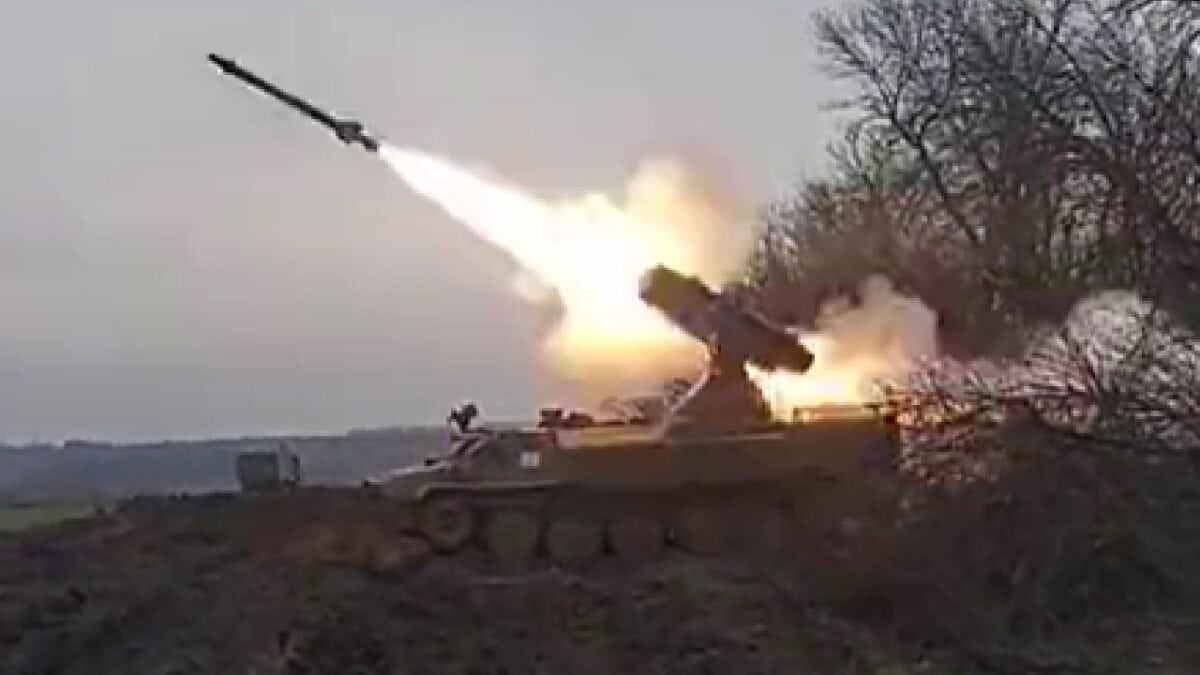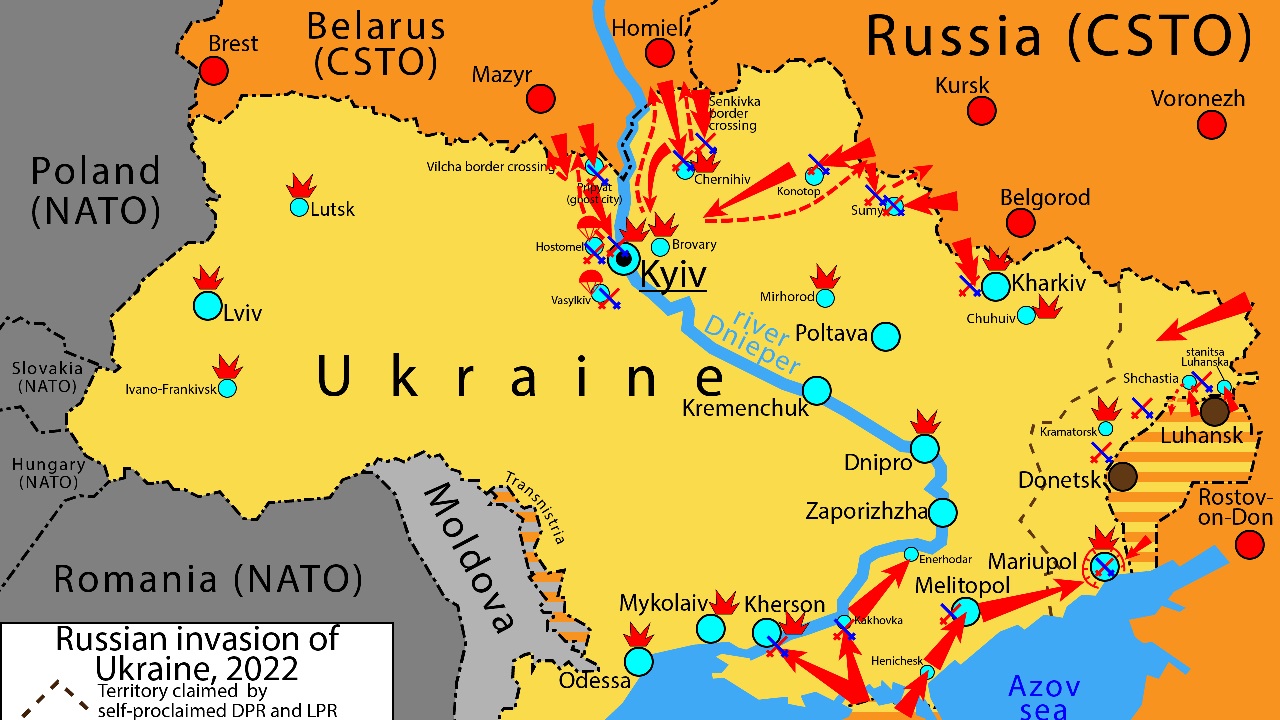Last month Ukraine shed the Soviet hammer and sickle from its megalithic Mother Ukraine statue in Kyiv – replacing it with its own trident which has served as a symbol for Ukrainian nationhood for well over a millennium. Built in the early 1980s as part of a series of monuments to honor supposed friendship between Moscow and Kyiv, the Mother of Ukraine statue represents the latest effort at decommunization in Ukraine’s campaign to eliminate remaining vestiges of Russian and Soviet cultural oppression. Irony abounds, as Ukraine follows up cultural victories with battlefield successes, as Russia’s Vladimir Putin continues to experience tactical defeats at the hands of the very nation he claimed didn’t exist leading up to the February 2022 invasion.
Moscow’s conduct over the past year-and-half is a natural outgrowth of the pseudo-historical claims outlined in Putin’s July 2021 essay titled, “On the Historical Unity of Russians and Ukrainians,” where he alleges that Ukrainians and Russians are “one people” victimized by Western plots to sow discord and division throughout the Slavic world. In this narrative, any “military operation” waged by Moscow would be legitimate and necessary to reclaim lost territory and reunite a singular nation.
Security and humanitarian issues notwithstanding, this view attempts to subsume any sense of Ukrainian uniqueness under the cloak of Russian cultural hegemony and deny all historical, political and cultural attributes which characterize Ukrainians as a separate nation. In the battle of competing narratives, many things can be true and require appropriate nuance – however, what can’t be compromised is the truth that Ukraine enjoys an established history and independent culture which fuels their fight for survival today.
Ukraine and a Tragic History
The fact that the peoples of Ukraine, Belarus, and Russia share a genesis through the 10th – 13th century medieval Kievan Rus state does not discredit each nation’s individual claims of political and cultural sovereignty. Any statement to the contrary would be akin to arguing that France and Italy lack separate identities given their shared Roman roots.
Rather, Ukrainians for the past millennium have cultivated a rich culture replete with their own localized religious, political and linguistic styles, despite centuries of overlapping external pressures and influences.
After the fall of Kyiv to the Mongols in 1240, Ukraine’s development was tempered in a geopolitical furnace situated between the expansionist empires of Poland-Lithuania in the west and Muscovy (Moscow) in the east. The establishment of the Polish-Lithuanian Commonwealth with the Treaty of Lublin in 1569 partitioned much of modern-day Ukraine between these two eastern and western hegemons but failed to fully absorb a growing Ukrainian nation capable of bequeathing core cultural and political institutions.
Ukraine’s early political movements in the 16th and 17th centuries mirrored prevailing national and cultural sentiments which emphasized liberty, democracy and self-expression as governing ideals – juxtaposed to neighboring Russia colored by autocracy and inflexible cultural sublimation. Instead of defining their nation along purely ethnic lines, or along other similar immutable characteristics, the early Ukrainian nation-state defined itself along aspirational values of rugged individualism combined with a unique polyglot Orthodox tradition.
Even Russian artists during later periods revered these cultural and political attributes, as represented in Russian imperial artist Ilia Repin’s (1844-1930) painting, Zaporozhian Cossacks Writing a Mocking Letter to the Turkish Sultan, depicting a society of free leaders eschewing the yoke of foreign rule.
However, history is an instructor in contingency. Mere decades later, in 1648 Ukrainian Cossacks led by their Hetman (leader) Bohdan Khmelnytsky enlisted the help of the neighboring Moscow Tsardom to overthrow their Polish-Lithuanian overlords in the hopes of greater Ukrainian autonomy. Rather than securing their freedoms, this Faustian bargain introduced over three-hundred years of Russian control over Ukraine, beginning with the 1654 Treaty of Pereyaslav.
Ukraine’s survival despite centuries of overlapping rule and subjugation from multiple neighboring empires – Russian, Polish-Lithuanian and later Austro-Hungarian – is a testimony to the enduring resilience of the Ukrainian nation, both past and present. Their resistance today against revanchist Russian expansion is further proof of the legacy of Ukraine’s intractable commitment to self-determination.
Russia’s attacks against Ukraine today – ranging from attacks on civilian centers, churches and the kidnapping of over 16,000 Ukrainian children – are the latest manifestations of a campaign to deny a separate Ukrainian historical development, cultural identity and any subsequent representative political framework. Ukraine’s fight for survival isn’t just about territory but is the apotheosis of their enduring struggle for freedom.

Ukraine Missile Attack Social Media Screenshot
History enables citizens to construct their own mythology just as easily as it helps individuals understand the nuances of their own identity, forged over centuries of equal parts victory and tragedy. Make no mistake, Moscow’s current invasion is established upon premises that are as morally bankrupt as they are historically ignorant. After celebrating their 32nd year of independence on August 24, let the historical record show that Ukrainians today inherit a culture and political tradition fortified by generations seeking to protect their identity and ensure the continuation of a nation accessible to its posterity.
From the Ukrainian diaspora of the medieval era to the pioneering 17th century Cossacks and the courage of the anti-Soviet Ukrainian activism of the Shestidesyatniki dissenters of the 1960s, Ukrainians enjoy a multi-layered heritage well equipped to guide citizens moving forward as they seek to protect a free and independent Ukraine against those seeking to deny them that right.
About the Author
Zachary Popovich is a Program Associate at the International Republican Institute. The opinions expressed in this piece are his own.

